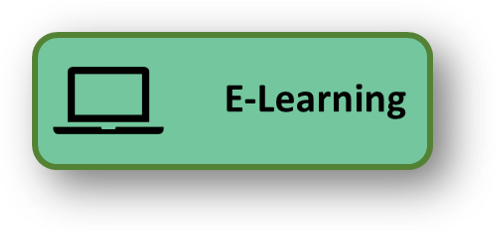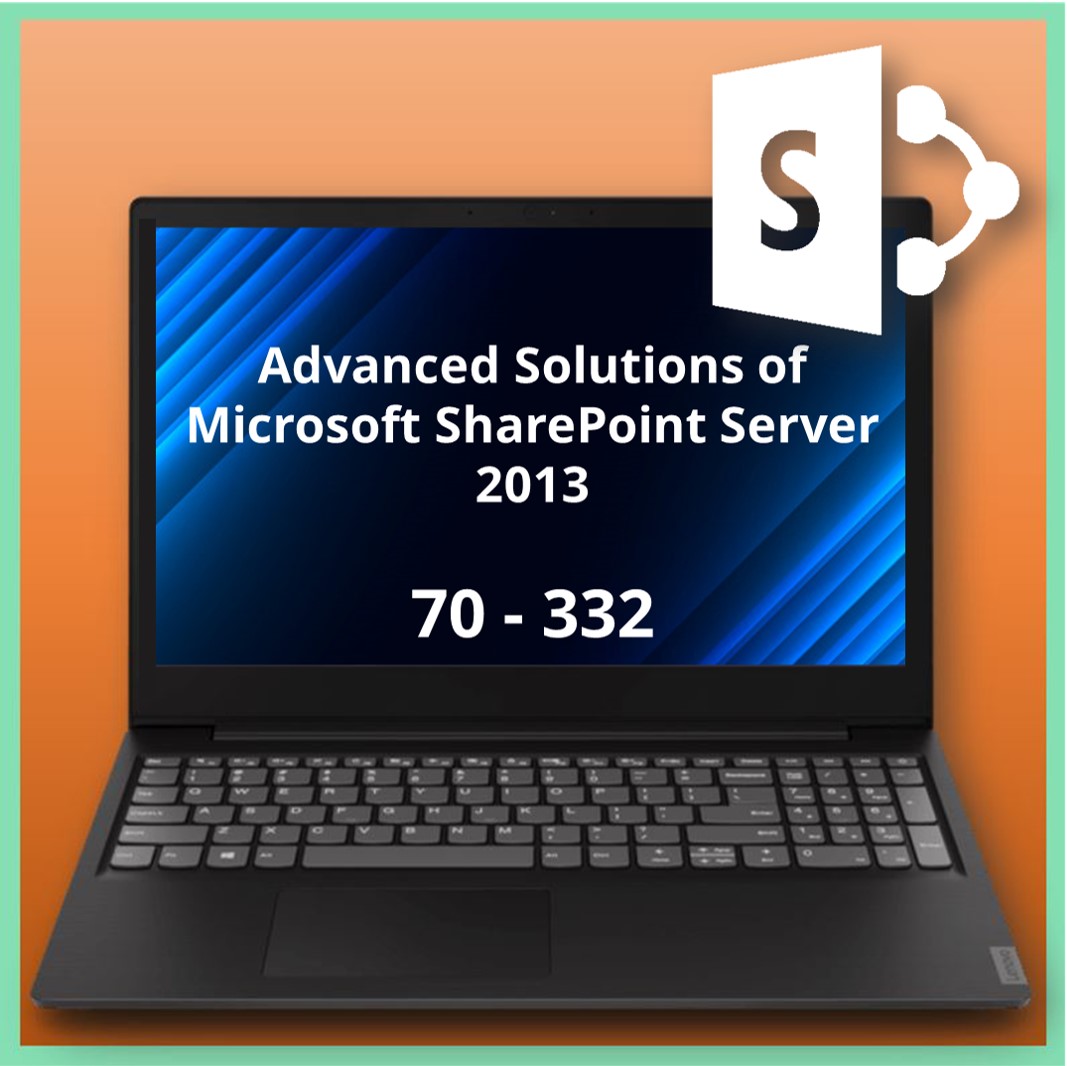Aangeboden leervormen

70-332: Advanced Solutions of Microsoft SharePoint Server 2013
Met de online training 70-332: Advanced Solutions of Microsoft SharePoint Server 2013 van Sinteno krijg je de meest complete digitale leeromgeving en de beste voorbereiding op de praktijk of het examen. Het is een dynamische en unieke voorbereiding op de certificering EN geeft je tools die volledig zijn geïntegreerd in een omgeving.
De online training 70-332: Advanced Solutions of Microsoft SharePoint Server 2013 geeft toegang tot zowel de e-Learning, de examensimulatie, een online mentor, examenquizzen, tips, trucs en links.
Een Live Lab voor deze training is niet beschikbaar.
Hier vind je meer informatie over CertKits en Live Lab's
In de online training 70-332: Advanced Solutions of Microsoft SharePoint Server 2013 van Sinteno leer je een server, gebaseerd op SharePoint 2013, te configureren en te beheren. Ook krijg je een uitgebreide leidraad en best practices op het gebied van SharePoint 2013. Daarnaast leer je de geavanceerde functionaliteiten kennen en de belangrijkste veranderingen ten opzichte van de vorige versies van SharePoint 2013.
Onderwerpen die onder andere aan bod komen zijn de nieuwe functionaliteiten van 70-332: Advanced Solutions of Microsoft SharePoint Server 2013, te weten service applications, SharePoint Business Intelligence, social computing, search, content management, SharePoint Governance en nog veel meer.
Voor wie
Netwerk- en systeembeheerder.
Programma
Tijdens de training worden de volgende onderwerpen behandeld:
Designing Advanced Solutions: Continuity
- Start the course
- Recognize how high redundancy can be achieved in SharePoint 2013
- Describe:
- Storage redundancy
- The use of SQL aliases
- SQL log shipping technology
- How log shipping is used to provide high availability to remote locations
- The management of SQL log shipping
- Identify considerations when planning SQL mirroring
- Describe SQL login consistency
- Identify how to plan SQL clustering for SharePoint 2013
- Plan a SQL AlwaysOn availability group
- Describe:
- Live migration
- How to plan for service distribution
- How to plan for search service instance distribution
- Identify features of the distributed cache service
- Recognize how to plan for service instance configuration
- Identify how to plan for network redundancy
- Identify the function of network load balancing
- Describe how Microsoft Windows Server Network Load Balancing(NLB) is used in load balancing
- Describe how SharePoint's Request Manager is used in server load balancing
- Recognize how to plan for disaster recovery
- Describe SharePoint and SQL backups
- Describe file backups
- Identify backup strategies
- Describe SharePoint backups
- Identify recovery strategies
- Describe content recovery strategies
- Recognize how to perform a content refresh
- Plan for database and upper tier availability and disaster recovery in a given scenario
Designing Advanced Solutions: Search Services
- Start the course
- Identify features of user profiles
- Describe:
- The requirements for planning profile synchronization connections
- The settings that can be configured for profile synchronization
- Characteristics of a community site environment
- The function of the enterprise community portal template
- The planning of activity feeds
- Elements of My Sites planning
- Recognize how My Sites are managed
- List the permissions and security settings available in the User Profile Service Application
- Describe:
- Characteristics of index freshness
- Elements of the search schema
- Characteristics of result sources
- Describe how:
- Result sources can be used to optimize search efforts
- SharePoint search tools can help administrators manage search relevance
- Query Rules and Authoritative Pages can help administrators manage search relevance
- Extraction dictionaries can be used to improve the search experience
- User interface and display templates are used to improve the search experience
- Identify the content types that can be analyzed using the SharePoint analytics processing component
- Recognize the function of usage reports
- Plan and configure social computing features
Designing Advanced Solutions: Content Support
- Start the course
- Describe Web Content Management (WCM)
- Describe the concept of content deployment
- Identify the tasks to enable the content deployment feature
- Describe how product catalog and topic pages can be used to create adaptive SharePoint sites
- Describe the scenarios in which cross-site publishing can be used
- Recognize the function of design manager
- Describe the function of Enterprise Content Management (ECM)
- Describe how:
- The Content Organizer supports the routing of documents
- Document routing can be managed
- Collaborative work is improved with co-authoring
- Recognize record disposition and retention considerations
- Describe:
- How eDiscovery extends content discovery beyond what is in stored in SharePoint
- The eDiscovery site template
- Best practice when working with large document repositories
- Plan and configure web and enterprise content management in a SharePoint 2013
- List the Office 365 features that make it a seamless solution
- Describe:
- Integrating SharePoint Server 2013 with Office Web Apps 2013
- Office Web Apps 2013
- Excel Web Services
- The tasks involved in deploying Office Web Apps
- Configure an Office Web App
- Complete configuration of a Web App in SharePoint 2013
- Describe how SharePoint 2013 integrates with Exchange Server 2013
- Configure SharePoint-Exchange integration
- List Project Server 2013 features
- Describe Project Server 2013 deployment
- Install Project Server 2013
- Integrate Office Web Apps and Microsoft Exchange server with SharePoint Server 2013
Microsoft SharePoint Server 2013 – Designing Advanced Solutions: Applications
- Start the course
- Recognize characteristics of the Shared Services Provider
- Recognize how service applications work in SharePoint 2013
- Describe service application components
- Describe service application communications
- List service applications deprecated in SharePoint Server 2013
- Match the new service application available in SharePoint Server 2013 to its description
- Match the common service applications to their functions
- Describe the considerations when planning a service application topology
- Navigate the Central Administration web application
- Navigate the managed service applications within the Central Administration web application
- Create a new app pool using Windows PowerShell
- Describe features of the Secure Store application
- Sequence the tasks in deploying the Secure Store application
- Deploy the Secure Store Service
- Describe:
- Characteristics of the Business Connectivity Service (BCS) application
- How SharePoint Designer 2013 can be used to in external content creation
- How external LOB data is funneled into SharePoint
- Reasons for federating service applications
- Differentiate between publishing and consuming farms
- Describe the tasks used in implementing SharePoint Application Federation
- Describe certificate exchange and trust operations
- Configure trust between SharePoint farms
- Publish a service application to a publishing farm
- Publish a service application to a consuming farm
- Plan, deploy, and federate service applications
Designing Advanced Solutions: Support Service
- Start the course
- Recognize why companies use technologies related to Business Intelligence
- Recognize how BCS uses External Content Types
- Describe the concept of BCS models
- Match the BCS Model object level security type to its description
- Assign BCS permissions
- Describe the function of a BCS profile site
- Create a search-based profile page
- Describe the Secure Store service application
- Create a Secure Store target application
- Configure credentials for a target application
- List the BI tools available for creating reports from raw data
- Explain PerformancePoint functionality
- Create and define a PerformancePoint data source
- Describe SQL Server Reporting Services
- Recognize the requirements needed by PowerPivot to create complex reports
- Recognize the BI security tools available
- Plan for and support SharePoint Business Intelligence
Designing Advanced Solutions: Solutions
- Start the course
- Recognize SharePoint features
- Recognize how to deploy SharePoint features
- Describe farm solutions
- Recognize how to deploy farm solutions
- Describe the management of farm solutions
- Implement a farm solution
- Identify what a sandbox solution is
- Recognize how to get sandbox solutions running
- Implement a sandbox solution
- Describe the SharePoint App architecture
- List the types of SharePoint Apps
- Describe the tasks involved in preparing the farm for apps
- Recognize how to prepare DNS for apps
- Recognize the function of the App Catalog
- Describe SharePoint App management
- Describe how to enable a service app
- Create an App Catalog
- Configure app URLs
- Add an app to the App Catalog in SharePoint 2013
- Complete deployment of an app in SharePoint 2013 on premises
- Manage farm and sandbox solutions and apps within SharePoint Server 2013
Voorkennis
Je bent in het bezit van de MCSA: Windows Server 2012 certificering.
Examen
Let op: Deze training blijft wel bestaan maar de mogelijkheid om het bijbehorende examen af te leggen is per 31 januari 2021 komen te vervallen.
Een groot aantal Microsoft trajecten zijn namelijk aan het veranderen. Veel MCSA en MCSE trajecten maken plaats voor Role-Based trajecten.
De vervanger van deze online training is:
MS-300: Deploying Microsoft 365 Teamwork en
MS-301: Deploying Sharepoint Server Hybrid
Van de MS-300 wordt de:
MS-300T03 en MS-300T04 weer vervangen door MS-700: Managing Microsoft Teams
en de
MS-300T01 en MS-300T02 door de MS-040: Manage Sharepoint and One Drive in Microsoft 365.
Bij de training inbegrepen
| Certificaat van deelname | ja |
| Voortgangsbewaking | ja |
| Geschikt voor mobiel | ja |
| Studieadvies | Onze consultants zijn beschikbaar om je te voorzien van studieadvies. |
| Studiemateriaal | Gecertificeerde docenten met uitgebreide kennis over de onderwerpen. |
| Service | Service via telefoon of e-mail. |







